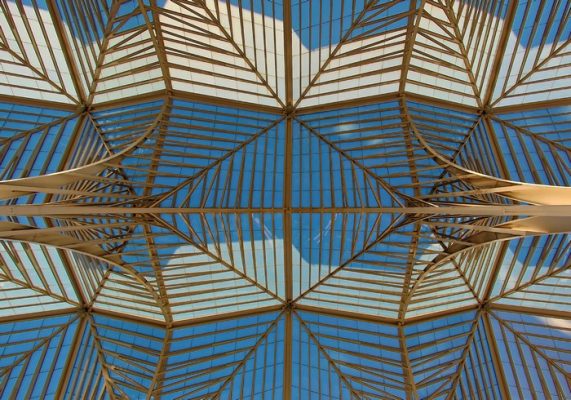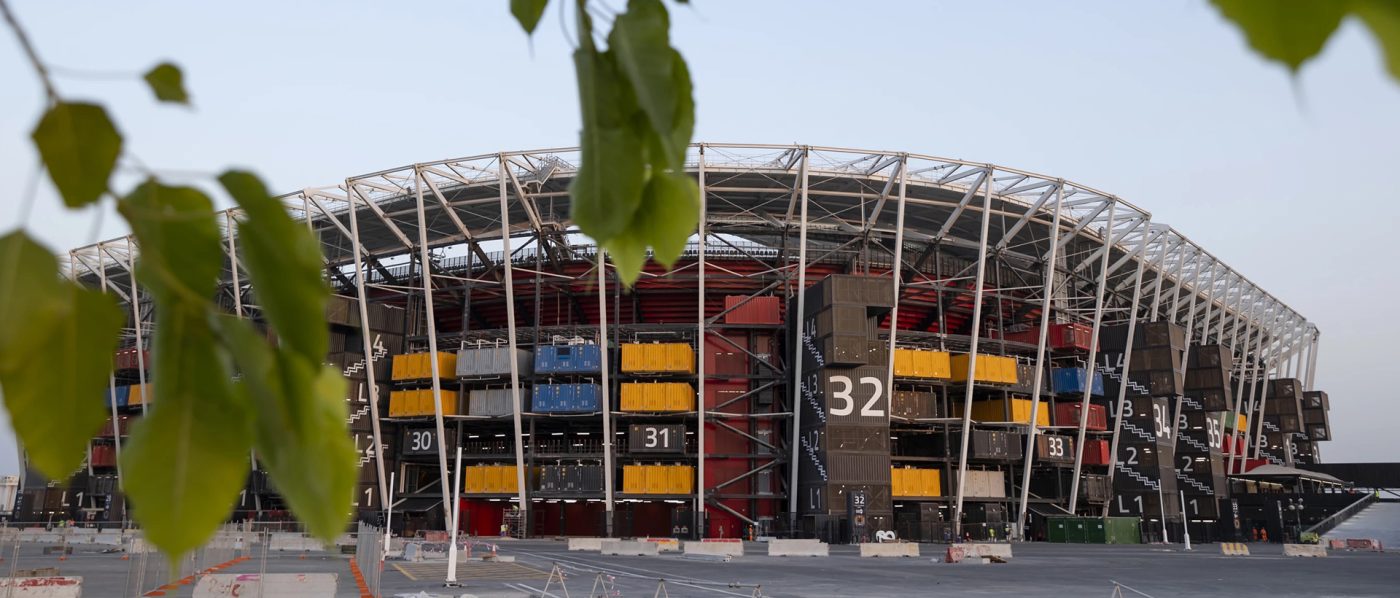Steel or steel structure is one of the era’s “late birth” materials, having been widely used during the twentieth century. Previously, wood or concrete sand were preferred because to their natural and readily available characteristics. However, in order to satisfy the trend of streamlining, cost optimization, lightness, and sustainability in building and industry, steel structure has emerged as the preferred material.
 Steel structure is one of the most important construction equipment materials in the business, particularly in the heavy industry, from highlight details to heavy-duty structures.
Steel structure is one of the most important construction equipment materials in the business, particularly in the heavy industry, from highlight details to heavy-duty structures.
1. The Steel structure at each stage:
1.1 The steel structure is merely a modest component in 19th-century constructions:
Steel was still being used in factory construction at the time. Factory and manufacturing plants are often constructed of wood or concrete. However, the advancement of steel production technology, as well as the development of novel steel processing technologies, has enabled the use of steel in factory structures.
1.2 The Steel structure has been confirmed in 20th-century:
Steel structures utilized in factory construction were more common during this time. Steel production techniques and manufacturing workshops are constantly evolving. As a result, the quantity and variety of steel structures produced increased. Because of its flexibility and capacity to boost loads, structural steel factory buildings became popular. Steel structural systems are typically designed during this time period using steel frames, steel columns, and steel beams.

By the twentieth century, steel construction had become the preferred material for main-subframe systems, heavy-duty components of factories, prefabricated buildings, warehouses, and so on.
1.3 Steel structure is in its golden era and shows no indications of slowing down in the twenty-first century.
Steel structures, particularly steel structures in industries, continue to be extensively upgraded with many exceptional qualities in the modern period, with many breakthrough and spectacular transformation milestones. Steel structure production, manufacturing, and processing technologies is becoming more advanced. This has enabled workshops and mechanical firms to produce higher-quality goods at cheaper manufacturing costs. The use of information technology and 3D simulation allows for more exact and efficient design and construction of steel structures. Furthermore, the greener and more sustainable construction trend has encouraged the usage of recycled steel structures and fireproof steel structures.
 Steel structures are currently popular and improving in terms of technical quality and forming level.
Steel structures are currently popular and improving in terms of technical quality and forming level.
To summarize, the trend of steel structure workshops has witnessed constant development and progress from the nineteenth century to the present. Steel manufacturing technology is becoming more advanced, and the advancement of building technology has played a significant role in encouraging the use and upgrading of steel structure factories.
2. Steel structure in the industrial sector
2.1 Steel structure common application:
Steel structure is a type of construction made primarily of steel materials that are fabricated and processed for use in industrial works:
 Daidung is pleased to provide steel structures to the construction of the 974 Stadium in Qatar for the 2022 World Cup season.
Daidung is pleased to provide steel structures to the construction of the 974 Stadium in Qatar for the 2022 World Cup season.
Warehouses, factories, factories, bridges, and culverts are examples of prefabricated structures.
- Warehouses, factories, industries, bridges, and culverts are examples of prefabricated constructions.
- Buildings, offices, and shopping centers are examples of civil works.
- Stadium, museums, and exhibitions are examples of public infrastructure.
- Bridges, wharfs, cranes, etc.
- Thermal power, hydroelectric, petrochemical, and mineral extraction components and equipment.
2.2 Steel structures are widely used in heavy industry:
Steel structures are widely employed in many different disciplines in industry and construction, in addition to thermal power, hydroelectricity, and mining. Here are some other places where structural steel can be used:
2.2.1 Petroleum industry:
The steel structure is utilized in the construction of infrastructure systems and structures at ports, refineries, gas plants, oil and gas pipeline systems, tank systems, and crane structures.
 Daidung is the first mechanical engineering unit to specialize on steel structures for the heavy and energy industries.
Daidung is the first mechanical engineering unit to specialize on steel structures for the heavy and energy industries.
2.2.2 Automotive and engine manufacturing:
Structural steel is utilized in the production and assembly of vehicle and engine mechanical elements. It is found in chassis, suspension, engines and transmissions, fuel tanks, and other mechanical components.
2.2.3 Industry of aviation and space:
Airports, runway systems, air terminals, space infrastructure, and industrial structures associated to the aviation and space sectors all employ structural steel.
2.2.4 Industry and environment of water treatment:
Water treatment plants, sewage treatment plants, plumbing systems, and waste tank systems are all built with structural steel. It is also employed in fireproof and environmental protection structures.
2.2.5 Food and beverage processing industry:
Food processing industries, breweries, sugar mills, and fish processing plants are all built with structural steel.
3. 6 DDC industrial steel structure characteristics:
3.1 Meet load-bearing requirements:
Fabricated DDC industrial steel structures must meet the requirements of outstanding mechanics, high bearing capacity, strong deformation resistance, and ease of processing and assembly.
3.2 Technical analysis-based design:
Prior to construction, each DDC steel structure will be comprehensive drawings and technical analysis during the estimating phase, in order to calculate and identify the requirements for load, bearing capacity, and safety. Typically, this design is based on appropriate standards and requirements.
3.3 Different shapes and sizes:
The design and size of DDC industrial steel buildings vary based on the nature and requirements of each project. The works are currently incredibly aesthetic. As a result, the model and surface coating of the DDC steel structure become the focal points of adding value. The DDC Production Division meticulously meets the manufacturing criteria of both standard and expert craftsmanship by selecting a team of technicians and professional welders.
 Daidung is the general contractor for Hoa Phat – Quang Ngai Iron & Steel Complex construction.
Daidung is the general contractor for Hoa Phat – Quang Ngai Iron & Steel Complex construction.
3.4 Standard manufacturing procedure:
DDC steel structures are constructed in accordance with project specifications and meet high quality standards based on current international certificates. Precision manufacturing and quality control procedures aid in the precision and dependability of steel products.
3.5 Stage of assembly and connection:
Steel components in industrial constructions are often constructed and connected using expert techniques such as:
Solder junctions connect, tighten bolts, anchor bolts are joined by a stopper.
This contributes to the formation of a strong and secure structure.
3.6 Cutting-edge technology:
Today, advanced technologies such as 3D design software, simulation, and engineering analysis are frequently used to assist industrial steel constructions. This technology enhances precision, performance, and project management.
 DDC Steel Structure has created certain marks in the flow of time to become the leading sustainable development material in the future.
DDC Steel Structure has created certain marks in the flow of time to become the leading sustainable development material in the future.
The steel structure is widely used in a variety of industrial and construction applications. Steel structure is a component, structure, equipment, or frame system that delivers durability, strength, and flexibility while meeting the stringent criteria of various industries. And DDC is a forerunner in mechanical engineering solutions, designing, processing, manufacturing, and erecting steel structures in Vietnam and around the world.
#steelstructure #industry #construction #ddcsteelstructure
